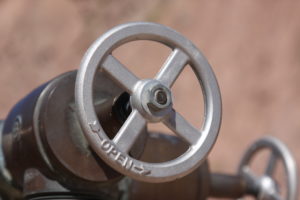When Is It Time to Replace Your Pressure Relief Valve?
Nearly 99% of PRV failures happen because of installation or re-installation issues.
And when a PRV fails, it can lead to an explosion. Damaged equipment, disrupted work flow, and even injury may result.
Why take that risk when you can easily tell whether or not your pressure relief valve needs replacing or repair.
If you’re wondering about the lifespan or condition of your PRV, here’s a guide to knowing when it’s time to get a new one.
How to Know if it’s Time for a Pressure Relief Valve Replacement
A water pressure relief valve (PRV) is vital for reducing the incoming pressure from your water supply source.
How does a Pressure Relief Valve Work?
Water entering the PRV is constricted and pushed into the valve’s inner chamber. The chamber is controlled by a spring-loaded diaphragm and disk. When water pressure fluctuates, the PRV helps maintain a constant flow and safe water pressure.
A PRV will be functional only as long as the water supply pressure doesn’t drop below the PRVs preset pressure.

How to Test Your PRV
When a PRV fails due to age or malfunction, it can lead to explosions. Regular PRV testing every 6 months to troubleshoot and fix issues is recommended, but check your local requirements for stricter standards.
To test your PRV for optimal functionality, follow these steps.
- Raise and lower the test lever several times and make sure water comes out and flows to the pipe
- Turn down pressure to stop the leak, replace the test lever, and increase the pressure
- Make sure the pipe is free of mineral salt, rust, and corrosion
- If this test fails, it is time for a replacement
Repair or Replace?
Replacing a PRV is much less expensive than the time and parts it takes for a repair. However, depending on the size and number PRVs that need replacing, preventative maintenance and repair may actually cost you less in the long run.
So how do you know when you need a replacement versus the times a repair is sufficient? Here are five ways to tell that your PRV requires replacing.
PRV Age
The spring in the diaphragm can lose tension over time. Make sure you replace your PRV every 4-5 years to avoid problems due to age.
Geographic Location
If your company is located in the desert, the local climate can be hard on PRV seals.
PRV Usage
The amount the PRV is used also contributes to how much wear and tear it undergoes. The rule of thumb is to replace a PRV after each discharge. However, high-use PRVs may require more frequent replacements than that.
Water Pressure
If water comes out in a trickle instead of a rush, this is a sign there could be debris blockage. In this case, clean out the pipes and re-test. If the water pressure is still low, it’s time to replace your PRV.
Leaking and Strange Noises
PRV valve leaking usually means there’s a hole in your valve. If you see pressure relief valve leaking, flooding, or if you hear strange noises coming from your PRV, it’s time for a replacement.
Where to Find PRV Replacements
So you’ve realized it’s time to replace your pressure relief valve.
PRVs have no margin for error unless you want an explosion on your hands. When searching for a replacement, you want the best parts on the market.
CPV Manufacturing has the best PRVs on the market to fit your individual or company needs. Check out our PRVs or head over to our news blog for more information about machined valves and fittings.

